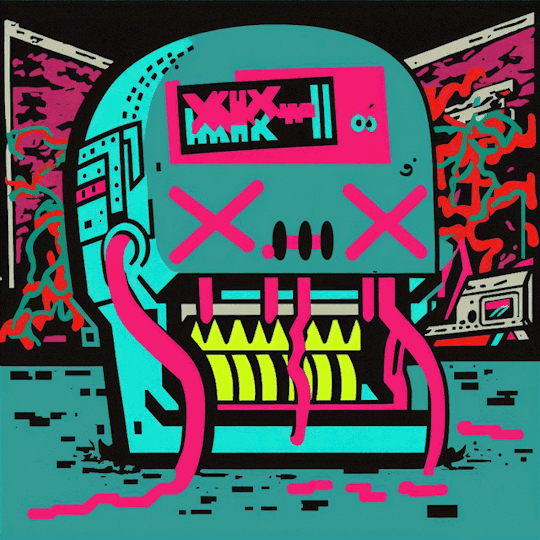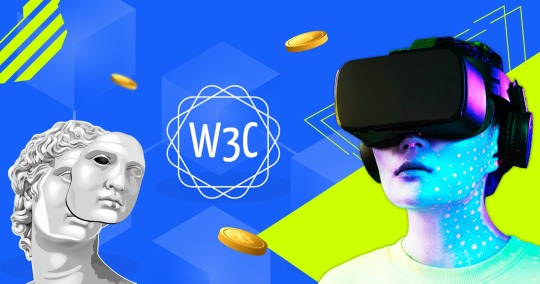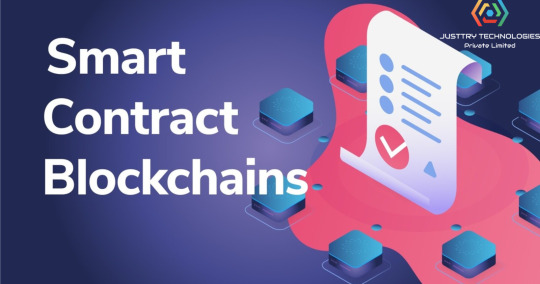#Web3.0
Explore tagged Tumblr posts
Text

XCOPY tribute
#xcopy#comic#webcomic#meme#webart#web3.0#graffiti#street art#webcore#gifart#dope art#funny#nft#art of web3#memetic#charicature#comic strip#postmeme
20 notes
·
View notes
Text

Web3Crunch - Web3 | Crypto | Blockchain | Technical Analysis
Web3Crunch is your go-to source for expert crypto technical analysis and insights on the fast-evolving world of Web3. From blockchain to decentralized finance and NFTs, we've got you covered.
Visit Website - https://web3crunch.tech/
2 notes
·
View notes
Text

Web 3.0 technology, we’re now seeing unprecedented opportunities that are changing the face of the hospitality industry as we know it. In this blog post, we’ll explore a few ways in which WEB3 tech can be leveraged by hoteliers in order to unlock new possibilities within the sector. Read More....
#WEB3 Technology#Hospitality Industry#web3.0#WEB3 protocols#VoIP technology#phonesuite direct#phonesuite dealers#PBX Communications#Telephony Solutions
3 notes
·
View notes
Text

【意外と不知】トークンとは?その定義・6種類の例を解説
0 notes
Text
Web 3.0 and the Future of the Internet: Key Insights for Developers

Web 3.0 marks the next step in the evolution of the internet, and developers must be ready to adapt. With decentralized technology like blockchain and peer-to-peer networks, Web 3.0 empowers users with control over their data. This shift impacts the entire web development process, moving away from centralized servers and towards more secure, autonomous platforms. Explore how these innovations will shape the future of the web, creating smarter, AI-driven applications and fostering a more connected digital ecosystem. Gain insights into what developers must focus on to remain competitive in this evolving technological landscape.
0 notes
Text

How Do Smart Contracts Work on the Coinbase Platform?
Introduction:
Smart contracts refer to self-executing contracts  based on the blockchain technology, which is employed in decentralized applications (DApp) and the overall blockchain transactions. In Coinbase specifically, smart contracts provide client the opportunity to engage with decentralized finance (DeFi) protocols, to conduct automatic transactions, and manage property in a more secure and efficient way.
Here's a breakdown of how smart contracts work on the Coinbase platform:Here's a breakdown of how smart contracts work on the Coinbase platform:
1. Integration with Ethereum and EVM-Compatible Blockchains:
Coinbase mainly works with Ethereum and other chains built on Ethereum Virtual Machine (EVM), which was developed to execute smart contracts. Smart contract features offered by the platform are available through the Coinbase wallet and enable users to engage with dApps and perform operations without third parties’ involvement.
2. Smart Contract Execution:
Whenever a user interacts with a smart contract on Coinbase (for instance by engaging with a DeFi application, staking cryptocurrency, or making trades,) the smart contract initiates without human intervention according to pre-programmed instructions etched into the blockchain. These conditions are open and fixed; this means that once these conditions have been deployed on the blockchain, they cannot be altered by any central authority.
3. Trustless Transactions:
At Coinbase, smart contracts help people complete transactions that have no need for a third party. This means that two transactors can communicate or exchange an asset where the middleman who vouches for each of the transactors or guarantors them is not necessary in this form of transaction. For instance, if you are using Coinbase’s wallet to transact with a lending and borrowing DeFi platform, the smart contract will facilitate loan agreements and repayment.
4. Gas Fees and Costs:
To run a smart contract on Coinbase, the user has to make a payment referred to as the “gas fee” which is the cost incurred when executing the smart contract on the ethereum network. The fees for gas depend on the solidity’s contract and the current load of the network.
5. Security and Transparency:
To this end, Coinbase guarantees that smart contracts executed on its platform are clear to users and free from risks. This basically means that every stage of the contract is encrypted on block chain which is hard to be altered. This is especially good because it means the users can check the terms and conditions of the contract before contract engagement whereby once certain conditions are met, the contract automatically executes.
6. DeFi and DApp Integration:
It is possible to integrate Coinbase wallets with numerous DApps and DeFi applications without any difficulties. Currently, to carry out transactions within decentralized exchanges or staking or lending platforms, users can engage with them through smart contracts. For instance, a smart contract designed for a DEX can facilitate token exchange of coins on specific and predetermined terms reducing the risks associated with the process.
7. Coinbase Wallet for Smart Contracts:
Smart contracts on Coinbase require the Coinbase Wallet for interaction. By creating a place where everyone can safely store their assets, and also communicate with DApps and the blockchain protocols. The wallet allows the users total control over their private keys meaning that the users solely own their funds and interactions with smart contracts.
Conclusion:
The smart contracts featured in the Coinbase platform provide the users with an efficient, safe, and computerized means of participating in transactions on the blockchain. This is because no matter if the user is engaged with DeFi, staking or simply using DApp, Smart Contracts guarantee a secure, transparent and efficient transaction. Meanwhile, Web3 evolution provides Coinbase as a connection where clients who want to exploit smart contracts and DeFi solutions start their journey.
#justtrytechnologies#smart contracts#web3 smart contract#web3.0#web3 development#blockchaintechnology#blockchaindevelopment#blockchaintechnologies#blockchaindevelopmentcompany
0 notes
Text
What is Web3 and How Does It Differ from Web2?

This article discusses the changes the internet has gone through since its introduction to transform society. But today, everybody is talking about Web3, a term trending across many industries. But what exactly is Web3, and how is it different from Web2? Now it’s time to take a closer look at this subject and to reveal the peculiarities of two web paradigms.
Understanding Web2
To know what Web3 is, one must see What Web2 is. Web2, also known as the read-writeweb, is the web that exists today. It focuses on content creation by users social networking, and interactive spaces. Of course, the most vivid examples of Web2 are such Social Media as Facebook, Twitter, Instagram, and others. They enable users to post and discuss content, post comments, and perform activities that allow them to have a community with centralized control over user data and activity.
In Web2, Social Media companies control the data, algorithms, and user experience. It has helped in creating smooth interactions and immense traffic in digital communication, but at the same time, it has become a point of controversy regarding data ownership and privacy.
Enter Web3
Web3 is a term used to refer to the Next generation of the World Wide Web that offers more decentralization and power to the users. In its essence, Web3 hides and builds a world where users have more control rather than being controlled by big giants. It uses such technologies as Blockchain to realize such goals.
Web3 also brings new related ideas and tools into the picture. Among all the advancements, one can single out the implementation of the Blockchain as the basis for many Web3 applications. Blockchain is a distributed database that creates an activity record and stores it in many computers so that no single record can be edited or deleted without changing it across the other records. This technology promotes transparency, security, and the possibility of trusting transactions without a centralized controlling body.
Web2 vs Web3: Understanding The Key Difference Between Web2 Vs Web3

1) Decentralization:
Like the previous generation, Web2 depends on centralized platforms and services to operate. Large SSMs regulate personal information and profit off of it, and ownership of platforms is in the hands of a single party.
Web3 focuses on decentralization in contrast to Web2. It applies such technologies as Blockchain, in decentralizing the control of the network among the users. Thus, there is no center to control Decentralized Social Media, and users own their data and interactions.
2) Data Ownership:
In Web2, data is owned and managed by the servers where it is stored. People produce content and distribute datasets, but the content belongs to the respective platforms. Web3 shifts this paradigm. The Blockchain simplifies control over data since it belongs to the users. Web3 Social Media also offers the ability to own the data and sometimes sell back the data to the platforms, changing the entire data ownership structure.
3) Monetization and Value Creation:
Most Web2 platforms are managed and financed through advertising and data gathering. Platform owners capture the value created by users.
New monetization opportunities also appear in Web3 as a result of such mechanisms as Socialfi, which combines finance and social networks. Some platforms allow users to receive rewards or cryptocurrencies in exchange for their engagement and input. They have profited better in value distribution. While reciprocating corresponding values for users’ contributions.
4) Transparency and Trust:
Web2 platforms are centralized and often criticized for lacking transparency. Thus, one can understand that people do not have a clear vision of how applications use their information or how algorithms work.
Web3 wants to bring in more openness. Blockchain records transactions and many activities clearly, allowing all users to verify them and gain confidence in the system's workings. It can be valuable in Web3 Social Media, where data processing treatments and algorithmic choice openness strengthen user confidence.
Interoperability:
1) Like most Web2 services, they are often provided in LIMBS, meaning that the compatibility of one service to another is very complex. For example, reposting some content on different Social Media accounts may require several processes.
2) Web3 emphasizes interoperability. When different platforms and applications use various protocols & are based on Blockchain, their work is interconnected. It makes the related digital ecosystems more interrelated and flexible.
Examples of Web3 Platforms
Several of the Top Web3 websites and platforms are already demonstrating the possibilities of this new model. These include:
Steemit: A Decentralized Social Media app that pays users in cryptocurrency for their content and moderation.
Mastodon: A social layer implemented through a network of servers that allows users to join other servers yet communicate on the global level.
Audius: An application that plays music and does not store content, allowing artists to own what they produce and receive payments directly from consumers.
All these networks represent decentralization and people’s power shift, demonstrating how Web3 can redefine conventional Social Media paradigms.
Know More - - What is an example of a DeFi?
The Future of Web3
As Web3 advances, it will influence the internet and Social Media platforms. The contrast of a new generation internet that will be decentralized, transparent, and in most cases, created for the user is promising. Decentralized Social Media platforms may be on the verge of recapturing a new era of Internet relations with better control, privacy, and monetary rewards.
It is still unclear, but the core ideas of Web3 and technologies that lay the groundwork for this new vision of openness and decentralization make it possible to dream of a future where users have even more control over their experience. Whether it is the Web3 Social Media, the Blockchain, or Socialfi solutions, the change to Web3 is a new paradigm for our online lives striving to create a fair society on the Net.
In Conclusion, Web3 is an innovative concept that defines a new paradigm of people's engagement with the World Wide Web. So, by identifying the guidelines and prospects, it’s possible to be ready for the wave of digital interactions.
0 notes
Text
Web 3.0
What are the potential impacts of Web 3.0 on decentralized finance and data ownership?
website-https://aeternus.foundation
0 notes
Text
BitNest is a financial ecosystem based on blockchain technology, aiming to establish a decentralized digital currency financial platform. The platform uses blockchain technology and smart contracts to build a series of financial services and products, including lending, savings, investment, etc., to meet users' various financial needs.
The goal of Bichao is to create a transparent, safe and efficient decentralized financial platform to provide more inclusive and convenient financial services to global users. Through blockchain technology, Bichao realizes the safe storage and flow of funds, eliminates intermediary links in the traditional financial system, and reduces the costs and risks of financial transactions.
The core of the BiChat ecosystem is its token, called Mellion Coin (MEC). As the base currency of the ecosystem, Mellion Coin plays an important role in various financial services on the BiChat platform, including payment fees and ticket fees. , loan collateral, etc. At the same time, Mellion Coin also has governance and economic incentive functions. Holders can participate in the governance and decision-making of the ecosystem and enjoy corresponding rewards.
In general, Bichao is an innovative and forward-looking digital currency financial platform that is committed to promoting the application of blockchain technology in the financial field and providing users with more open, fair and efficient financial services.# Make Money # Cryptocurrency # Blockchain # Web3.0 # Dife # bit # Bitnest
0 notes
Text

Coding the Rekkit
#web#digital illustration#gifart#artists on tumblr#webart#web3.0#memetic#meme#comic strip#comic#webcomic#webcore#webtoon#computers#software#technology#vintage#retro tech#geek#street art#comicart#artwork#digital art#illustration
13 notes
·
View notes
Text
BitNest is a financial ecosystem based on blockchain technology, aiming to establish a decentralized digital currency financial platform. The platform uses blockchain technology and smart contracts to build a series of financial services and products, including lending, savings, investment, etc., to meet users' various financial needs.
The goal of Bichao is to create a transparent, safe and efficient decentralized financial platform to provide more inclusive and convenient financial services to global users. Through blockchain technology, Bichao realizes the safe storage and flow of funds, eliminates intermediary links in the traditional financial system, and reduces the costs and risks of financial transactions.
The core of the BiChat ecosystem is its token, called Mellion Coin (MEC). As the base currency of the ecosystem, Mellion Coin plays an important role in various financial services on the BiChat platform, including payment fees and ticket fees. , loan collateral, etc. At the same time, Mellion Coin also has governance and economic incentive functions. Holders can participate in the governance and decision-making of the ecosystem and enjoy corresponding rewards.
In general, Bichao is an innovative and forward-looking digital currency financial platform that is committed to promoting the application of blockchain technology in the financial field and providing users with more open, fair and efficient financial services.# Make Money # Cryptocurrency # Blockchain # Web3.0 # Dife # bit # Bitnest
1 note
·
View note
Text

In this blog post, we will discuss how smart contracts are revolutionizing the hospitality industry and why it’s something that marketers should pay attention to when integrating smart contracts into the hotel industry. Read More...
#voip technology#phonesuite direct#smart contract#web3.0#Hotel industry#hotel phone system#hotel hospitality#pbx system#voip phone#phonesuite dealers#business phones#voip advantages#pbx communications#Communications#VoIP#Reservation syste#Cloud technology#Desk phones#VoIP phones#Cloud communications#Telephone service#Call routing#Telephone systems#technology
0 notes
Text

【4選】世界を変えるブロックチェーンの『活用事例』
0 notes
Text
What is blockchain, how does it work, and is it secure?

A digital record book where data is stored in linked blocks, secured with unique codes, and can't be altered without permission. Blockchain, a peer-to-peer network, uses consensus to execute transactions between nodes, like transferring funds in cryptocurrency or sharing process data in other applications. Blockchains combine math and cryptography to create a secure system. Each block's design enables consensus and protects the network.
0 notes
